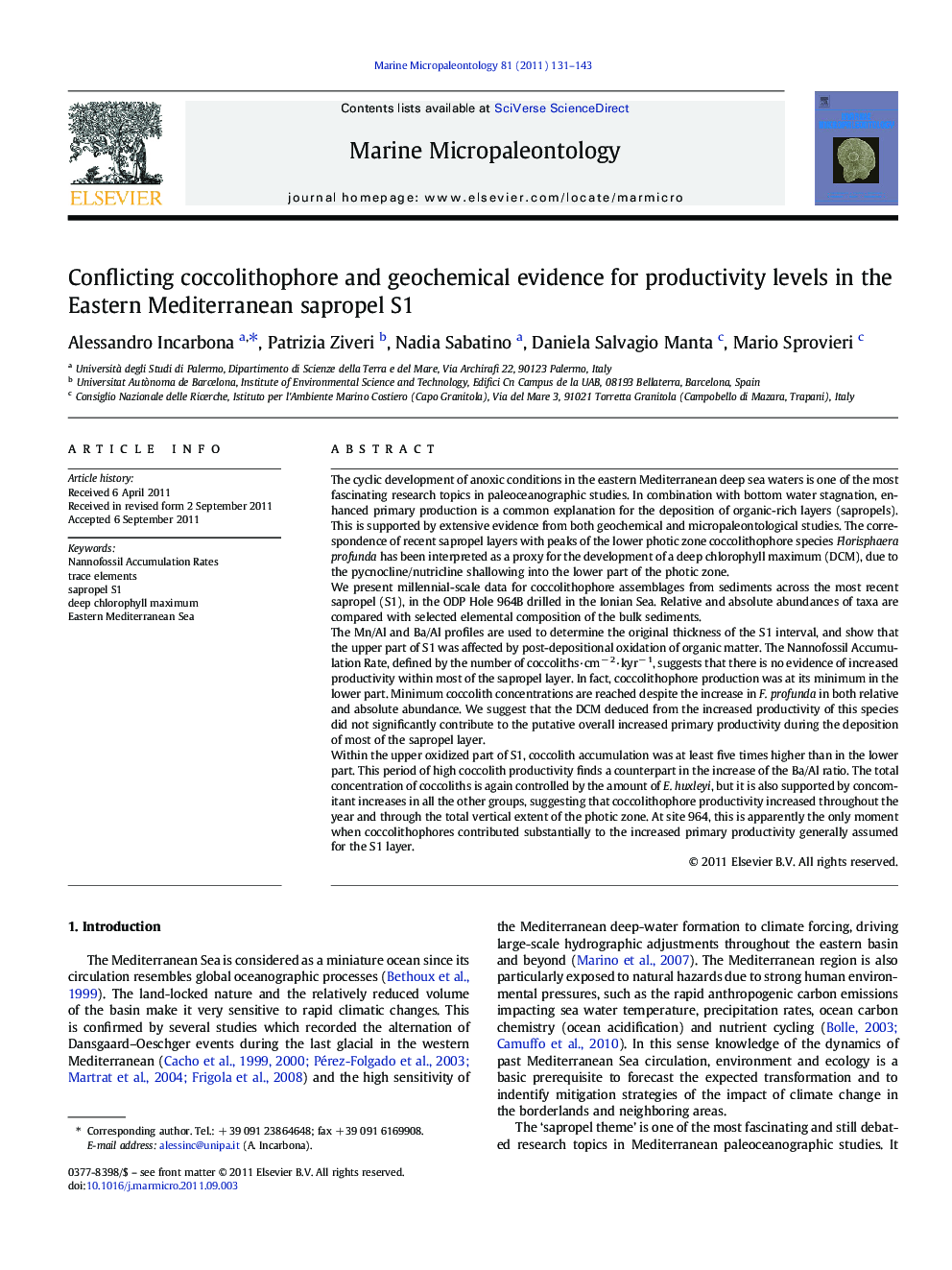| کد مقاله | کد نشریه | سال انتشار | مقاله انگلیسی | نسخه تمام متن |
|---|---|---|---|---|
| 4749020 | 1642196 | 2011 | 13 صفحه PDF | دانلود رایگان |

The cyclic development of anoxic conditions in the eastern Mediterranean deep sea waters is one of the most fascinating research topics in paleoceanographic studies. In combination with bottom water stagnation, enhanced primary production is a common explanation for the deposition of organic-rich layers (sapropels). This is supported by extensive evidence from both geochemical and micropaleontological studies. The correspondence of recent sapropel layers with peaks of the lower photic zone coccolithophore species Florisphaera profunda has been interpreted as a proxy for the development of a deep chlorophyll maximum (DCM), due to the pycnocline/nutricline shallowing into the lower part of the photic zone.We present millennial-scale data for coccolithophore assemblages from sediments across the most recent sapropel (S1), in the ODP Hole 964B drilled in the Ionian Sea. Relative and absolute abundances of taxa are compared with selected elemental composition of the bulk sediments.The Mn/Al and Ba/Al profiles are used to determine the original thickness of the S1 interval, and show that the upper part of S1 was affected by post-depositional oxidation of organic matter. The Nannofossil Accumulation Rate, defined by the number of coccoliths·cm− 2·kyr− 1, suggests that there is no evidence of increased productivity within most of the sapropel layer. In fact, coccolithophore production was at its minimum in the lower part. Minimum coccolith concentrations are reached despite the increase in F. profunda in both relative and absolute abundance. We suggest that the DCM deduced from the increased productivity of this species did not significantly contribute to the putative overall increased primary productivity during the deposition of most of the sapropel layer.Within the upper oxidized part of S1, coccolith accumulation was at least five times higher than in the lower part. This period of high coccolith productivity finds a counterpart in the increase of the Ba/Al ratio. The total concentration of coccoliths is again controlled by the amount of E. huxleyi, but it is also supported by concomitant increases in all the other groups, suggesting that coccolithophore productivity increased throughout the year and through the total vertical extent of the photic zone. At site 964, this is apparently the only moment when coccolithophores contributed substantially to the increased primary productivity generally assumed for the S1 layer.
► Millennial-scale data for coccolithophores from sapropel S1, in the Ionian Sea.
► No evidence of increased productivity within most of S1 from the NAR.
► During the latest phases of S1 there are evidences of renewed nutrient availability.
► The Ba/Al profile in the upper part of S1 supports a renewal in production dynamics.
Journal: Marine Micropaleontology - Volume 81, Issues 3–4, December 2011, Pages 131–143